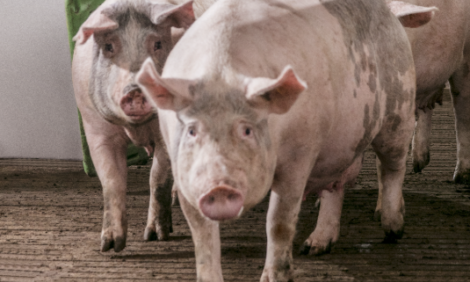



New African swine fever research: from China to US in feed ingredients?
USA - Dr Scott Dee, director of research and development with Pipestone Veterinary Services based in Pipestone, Minnesota, USA, presented new research about the ability of African swine fever (ASF) virus to move from continent to continent in contaminated feed at the North American PRRS SymposiumDr Dee's research is directly linked to his team's 2014 studies on porcine epidemic diarrhoea (PED) virus as he and his team were deciphering how PED had entered the US - a virus that, prior to the 2013 outbreak, had never before been in North America.
"We started looking in mills and finding bags of feed ingredients that were from China. Scientists had said that the virus most likely had come from China, based on fingerprinting so to speak," noted Dr Dee. "We started thinking, 'Could it be possible that this virus, PED, entered the US via contaminated feed ingredients from China,' and we set up a model to test that."
Dr Dee's 2014 PED research model clearly showed certain feed ingredients supported the PED virus very well through a simulated journey from Beijing to Shanghai to San Francisco, California to Des Moines, Iowa.
In his recent research, he wanted to see if other viruses could survive that journey as well.
"We developed a model that had representative transport time, representative environmental conditions - a time table from place to place that matched up as well as ingredients that we bring in from China," he said. "We kind of made a CSI, if you look at it that way, to understand could viruses actually move, other than PED, from Asia to the United States. Clearly, African Swine Fever, in my opinion, could easily do that based on our data."
With the assistance of South Dakota State University and Kansas State University and funding provided by the National Pork Board's Swine Health Information Center, Dee's research studied 12 viruses. Some of which are OIE notifiable diseases.
"We looked at 12 viruses - PED being one, African Swine Fever being another; we also looked at surrogates for foot-and-mouth disease virus as well," he noted.
It is important to note that the research was done as a simulation. However, the Chinese have found African swine fever virus in feed in China. As the outbreak grows in China, the risk of contamination of pig feed ingredients goes up, he said.
"Very few people realise that [the US] imports two million metric tons of agricultural products a year from the country of China. Grains, meat products, vitamins, amino acids, antibiotics - the list goes on and on," he explained. "It's amazing what global trade has done in the recent past to kind of make a spider web almost around the world."
When asked if those ingredients coming into the US now are being tested for African swine fever virus, Dr Dee said USDA is not currently testing any Chinese products for the virus at this time.
"The USDA has not allowed testing to be a routine procedure, but you never know - they might start sampling certain batches in an experimental sense, which I think is a good idea," he said. "My concern is it's going to take a lot of samples before you might find the one positive batch. I think this is kind of a needle in the haystack situation."
From journey to transmission
As Dr Dee noted his team's research showed through modeling that ASF virus could survive the journey from China via feed ingredient or several ingredients to North America. The next step is looking at transmission of the virus from feed ingredients to pigs. Dr Megan Niederwerder, assistant professor College of Veterinary Medicine at Kansas State University, presented research in conjunction Dr. Dee's presentation on that topic.
"[Megan's] doing a great job with her team to show that yes, the virus could be transmitted through feed to pigs. Her results are under review of a peer-review publication so I have to be careful in what I say," he explained. "It was amazing how well our data on transport segued into her data on transmission. That's like connecting the dots. We've never gotten that far yet, so my congratulations to her."







